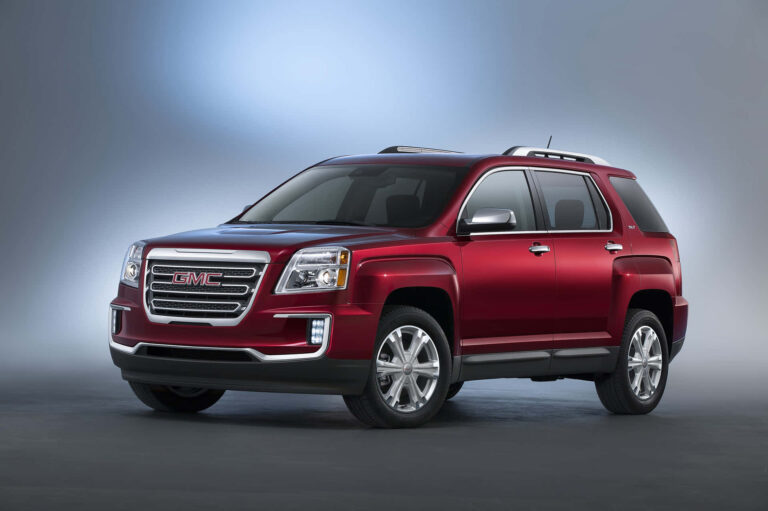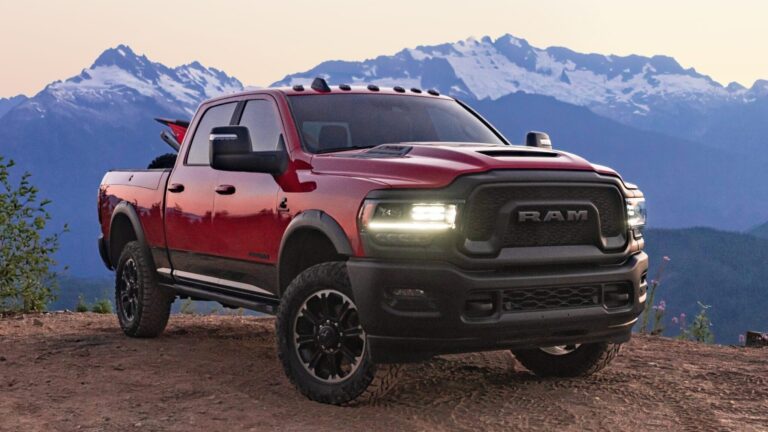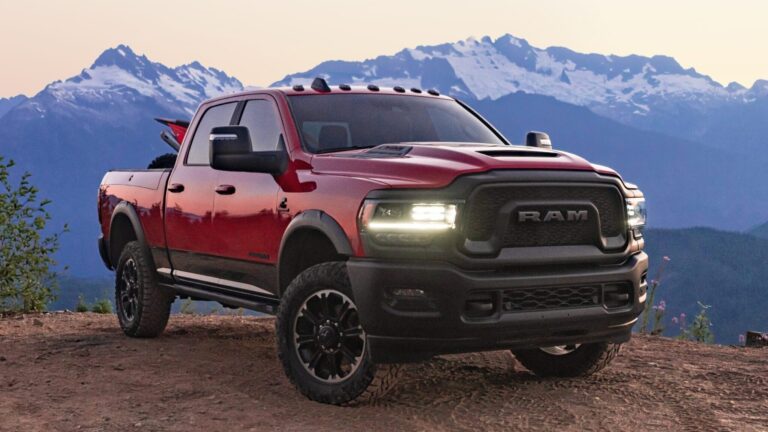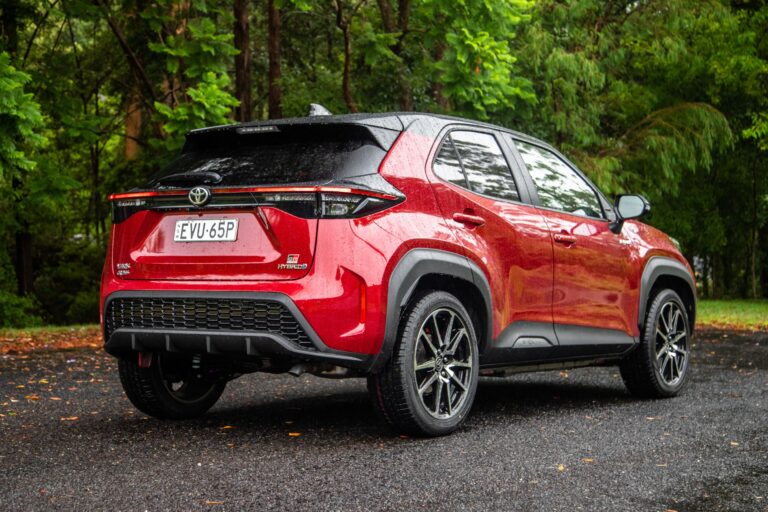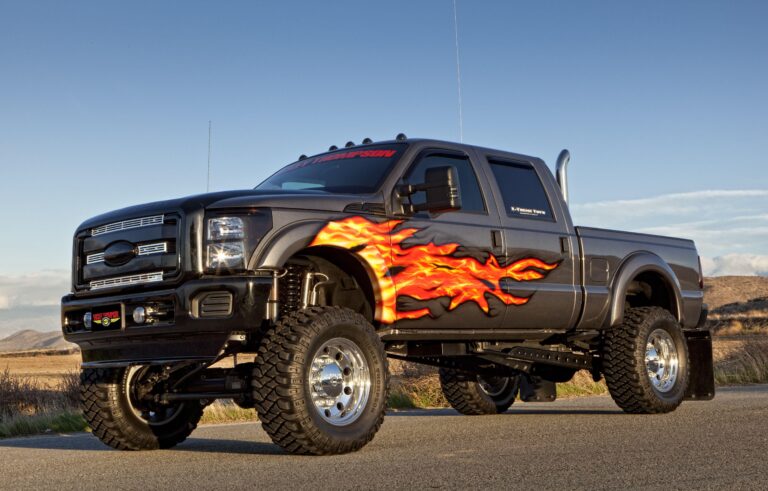Do I Measure The In To In For The Size Of A Truck Cap Our Out To Out?
Do I Measure The In To In For The Size Of A Truck Cap Our Out To Out? cars.truckstrend.com
The journey to finding the perfect truck cap often begins with a fundamental question: how do I accurately measure my truck bed? This seemingly simple task quickly becomes nuanced when terms like "in-to-in" and "out-to-out" enter the conversation. Understanding the distinction between these measurement methods is not just academic; it’s the critical difference between a perfectly fitting, weather-tight cap and a costly, ill-fitting disappointment. This comprehensive guide will demystify truck cap measurements, empowering you to make an informed decision for your vehicle.
Understanding Truck Bed Dimensions and Cap Fit
Do I Measure The In To In For The Size Of A Truck Cap Our Out To Out?
Before diving into specific measurement techniques, it’s crucial to grasp the fundamental relationship between your truck bed’s dimensions and how a truck cap is designed to fit. A truck cap, often referred to as a camper shell or topper, is essentially a rigid enclosure designed to sit securely over the bed rails of your pickup truck. Its primary purpose is to provide covered, secure, and weather-protected storage space.
The fit of a truck cap hinges on two primary dimensions: length and width. However, unlike a simple box, truck beds are not always perfectly uniform. They can taper slightly, have specific rail designs, and are subject to manufacturing tolerances. The cap must not only match the bed’s overall footprint but also sit flush and seal effectively against the top edges of the bed rails. This is where the "in-to-in" and "out-to-out" debate becomes paramount.
The "In-to-In" Measurement: Why It Matters Most for Bed Width
When discussing the width of your truck bed for a cap, the "in-to-in" measurement is arguably the most critical dimension.
What is "In-to-In"?
"In-to-in" refers to the measurement taken from the inside edge of one truck bed rail to the inside edge of the opposing truck bed rail. Imagine placing your tape measure directly across the open bed, from the interior surface of one side wall to the interior surface of the other.
Why is it Crucial?
The "in-to-in" measurement dictates the maximum width that the base frame or sealing gasket of your truck cap can occupy. A truck cap’s base is designed to sit on top of the truck’s bed rails, with its internal structure aligned to clear the inside of these rails. If the cap’s internal dimension is wider than your truck’s "in-to-in" measurement, it simply won’t drop down properly onto the rails. If it’s too narrow, it will leave a gap, compromising the seal and stability.
Practical Guide to Taking "In-to-In" Width:
- Clear the Bed: Ensure your truck bed rails are free of debris, bed liners (especially drop-in ones, which can significantly alter dimensions), or other obstructions.
- Multiple Points: Truck beds can sometimes taper, meaning they are slightly wider at the front (bulkhead) than at the rear (tailgate). Therefore, it’s essential to measure the "in-to-in" width at at least three points:
- As close to the bulkhead (front of the bed) as possible.
- In the middle of the bed.
- As close to the tailgate as possible.
- Identify the Widest Point: While the cap needs to fit the entire length, the widest "in-to-in" measurement you record will typically be the most critical for ensuring the cap’s base clears the internal edges of the rails.
- Perpendicular Measurement: Always ensure your tape measure is held perfectly perpendicular to the bed rails to get an accurate reading.
This "in-to-in" width measurement ensures the cap’s structural base fits within the boundaries of your truck’s bed rails, allowing it to sit flat and create a proper seal.
The "Out-to-Out" Measurement: When It’s Relevant (and for What)
While "in-to-in" is paramount for the fit onto the bed rails, "out-to-out" also plays a role, albeit in a different context.
What is "Out-to-Out"?
"Out-to-out" typically refers to the overall external dimensions of the truck cap itself. This would include the cap’s structural frame, any exterior flanges or "skirts" that extend slightly beyond the bed rails, and potentially any exterior features like handles or latches.
When is it Relevant?
- Cap Manufacturing: For the truck cap manufacturer, "out-to-out" dimensions are crucial for designing and building the cap. They use these measurements to determine the overall footprint, material usage, and packaging.
- Aesthetics and Overhang: The cap’s "out-to-out" dimension will always be slightly larger than your truck’s "in-to-in" bed measurement. This is because the cap’s base structure needs to sit over and around the truck’s bed rails. The slight overhang, often called a "skirt" or "flange," helps to shed water away from the bed rails and provides a finished look. The "out-to-out" dimension helps you visualize how much the cap will extend beyond the truck’s body lines.
- Clearance: Knowing the cap’s overall "out-to-out" dimensions can be important for practical considerations, such as:
- Will it fit in your garage with the cap on?
- Will it clear tight parking spaces or drive-thrus?
Important Distinction: You generally do not measure your truck bed "out-to-out" to determine the correct cap size for fit. The truck cap manufacturer has already accounted for the necessary overhang and "skirt" when designing a cap for a specific truck model based on its "in-to-in" bed rail measurements. Your primary focus should be on providing the manufacturer with accurate "in-to-in" bed rail dimensions.
The Crucial "Bed Rail to Bed Rail" Measurement (Length)
Beyond width, the length of your truck bed is equally vital. This measurement is generally straightforward but requires precision.
How to Measure Length:
- From Bulkhead to Tailgate: Measure the length of your truck bed along the top edge of the bed rails. Start from the inside edge of the bulkhead (the front wall of the truck bed, closest to the cab).
- To the Inside of the Tailgate: Extend your tape measure all the way to the inside edge of the closed tailgate.
- Measure on Both Sides: It’s a good practice to measure the length on both the driver’s and passenger’s side of the bed, as slight discrepancies can exist. Use the longer of the two measurements if there’s a difference.
- Standardized Lengths: Truck bed lengths are often standardized (e.g., 5.5 feet, 6.5 feet, 8 feet). While your measurement might be slightly off due to rounding or manufacturing tolerances, it should align closely with one of these standard sizes.
Practical Guide: How to Measure Your Truck Bed for a Cap
To ensure you get the right cap, follow these steps meticulously:
Tools Needed:
- A sturdy, long steel tape measure (at least 25 feet).
- Pen and paper for recording measurements.
- A flashlight (optional, for visibility in corners).
- A helper (highly recommended for accuracy).
Step-by-Step Instructions:
- Prepare the Bed: Remove any temporary items from your truck bed. If you have a drop-in bed liner, it’s highly recommended to remove it before measuring, as it can significantly alter the internal dimensions and affect the cap’s fit and seal. Spray-in liners generally do not interfere.
- Measure "In-to-In" Width:
- Measure the distance between the inside edges of the bed rails at the front (near the cab), middle, and rear (near the tailgate).
- Record all three measurements. Note the widest measurement you find. This is the critical "in-to-in" width for cap compatibility.
- Measure "In-to-In" Length:
- Measure the distance from the inside edge of the bulkhead (front of the bed) to the inside edge of the closed tailgate.
- Take this measurement along the top edge of the bed rails.
- Measure on both the driver’s and passenger’s side and record both.
- Measure Bed Rail Height (Optional but Helpful):
- Measure from the floor of the truck bed up to the top edge of the bed rail. This isn’t directly for cap fit but can be useful for determining interior height clearance or if you’re considering a cap that sits flush with the cab roof.
- Note Any Obstructions:
- Are there any toolboxes, fifth-wheel hitches, tie-downs, or other permanent fixtures that might interfere with the cap’s installation or interior space? Make note of their dimensions and locations.
- Verify Truck Information:
- Make sure you know your truck’s exact year, make, model, and bed length (e.g., 2023 Ford F-150, SuperCrew, 5.5 ft bed). This information, combined with your measurements, is what cap manufacturers use to determine the correct product.
- Double-Check: Always double-check all your measurements. Even a quarter-inch can make a difference in fit and sealing.
Important Considerations Beyond Basic Measurements
While "in-to-in" width and length are foundational, several other factors influence the perfect truck cap fit:
- Bed Liners: As mentioned, drop-in bed liners are notorious for altering bed dimensions, especially the "in-to-in" width. If you have one, either remove it before measuring or ensure the cap manufacturer accounts for it.
- Tailgate Design: Some truck models have unique tailgate shapes (e.g., integrated steps, power-operated tailgates). Caps are designed with specific cutouts or contours to accommodate these.
- Truck Model Year/Trim: Truck manufacturers occasionally make subtle changes to bed dimensions or rail designs between model years or even different trim levels. Always specify the exact year and trim.
- Over-Rail vs. Flush Mount: Most caps are "over-rail," meaning their base sits on top of the bed rails and extends slightly outwards. Some specialized caps might be "flush mount," sitting more within the bed’s perimeter, but these are less common.
- Cab Clearance: If you’re considering a cap with a "cab-over" design or one that extends forward over the cab, ensure there’s adequate clearance to prevent contact, especially during flexing on uneven terrain.
- Manufacturer Specifications: Ultimately, always consult the specific truck cap manufacturer’s sizing guide or their recommended measurement process. They have precise templates for each truck model.
Typical Truck Cap Pricing by Type (Based on Correct Measurement)
It’s important to clarify that "Do I Measure The In To In For The Size Of A Truck Cap Our Out To Out" refers to a measurement methodology, not a product with a price. However, applying these correct measurements leads to the purchase of a truck cap. The price of a truck cap varies significantly based on material, features, brand, and size. Below is a general price range for common truck cap types (prices are estimates and can fluctuate based on location, dealer, and specific options):
| Cap Type | Material | Key Features | Typical Price Range (USD) |
|---|---|---|---|
| Basic Aluminum Utility Cap | Aluminum | Lightweight, durable, often plain, single rear door, side access doors, ideal for work/utility. | $1,500 – $3,000 |
| Fiberglass Cab-High Cap | Fiberglass | Matches cab height, painted to match truck, side windows (sliding/tinted), rear door, interior light, carpeted headliner. | $2,000 – $4,500 |
| Fiberglass Mid/High-Rise Cap | Fiberglass | Taller than cab for increased cargo volume, painted to match truck, side windows, rear door, interior light, optional roof rack. | $2,500 – $5,500 |
| Commercial/Work Cap | Aluminum/Fiberglass | Heavy-duty construction, reinforced roof, multiple lockable side compartments, ladder racks, tool organization. | $3,000 – $7,000+ |
| Pop-Up/Overland Cap | Aluminum/Composite | Collapsible or pop-up roof for standing room/camping, often with integrated sleeping platforms, rugged design. | $5,000 – $15,000+ |
Note: Installation costs, additional accessories (e.g., roof racks, interior lighting upgrades, power locks, pet screens), and shipping fees are typically extra.
Frequently Asked Questions (FAQ)
Q1: Is "in-to-in" or "out-to-out" more important for the width of the cap?
A1: The "in-to-in" measurement of your truck bed rails is paramount for the width. This ensures the cap’s base fits correctly onto your truck’s bed rails without being too wide or too narrow. The cap’s "out-to-out" dimension is its overall external size, which will naturally be slightly larger than your bed’s "in-to-in" to allow for proper seating and overhang.
Q2: My truck bed tapers. Where should I measure the width?
A2: You should measure the "in-to-in" width at multiple points: at the front (bulkhead), in the middle, and at the rear (tailgate). The cap manufacturer will likely use the widest point recorded to ensure the cap clears the entire bed opening, but knowing all three points helps identify the taper.
Q3: Do I need to remove my bed liner before measuring?
A3: If you have a drop-in plastic bed liner, it is highly recommended to remove it before measuring. These liners can significantly reduce the "in-to-in" dimensions of your bed, leading to an incorrect cap size and poor fit or seal. Spray-in liners typically do not affect dimensions.
Q4: What if my measurements don’t exactly match a standard cap size?
A4: Truck bed dimensions can vary slightly even within the same model. Provide your exact measurements to the cap dealer or manufacturer. They have detailed specifications for each truck model and can advise on the correct cap that accommodates minor variances. It’s rare for a cap to be custom-built for slight discrepancies.
Q5: Can I use a cap designed for a different truck model?
A5: Generally, no. Truck beds, even those with similar lengths, have unique widths, rail designs, and tailgate contours. A cap designed for one specific truck model will typically not fit another model correctly, leading to poor sealing, instability, and an aesthetically unpleasing look.
Q6: How much overhang should a cap have?
A6: A typical truck cap will have a slight overhang, often referred to as a "skirt" or "flange," that extends perhaps 0.5 to 1.5 inches beyond the truck’s bed rails. This overhang helps shed water away from the bed and provides a finished appearance. The exact amount is determined by the cap’s design for your specific truck model.
Conclusion
The question of "Do I Measure The In To In For The Size Of A Truck Cap Our Out To Out" is fundamentally answered by understanding the function of each measurement. For securing a proper fit and seal, the "in-to-in" measurement of your truck bed’s width is the most crucial dimension. This ensures the cap’s internal structure correctly nests within your bed rails. The cap’s "out-to-out" dimension, while relevant for its overall footprint and aesthetics, is a consequence of its design to fit your "in-to-in" bed measurements.
Precision is paramount when measuring your truck bed. Take your time, use the right tools, measure at multiple points, and always double-check your figures. Armed with accurate "in-to-in" width and length measurements, along with your truck’s precise make, model, and year, you’ll be well-equipped to select a truck cap that fits perfectly, provides optimal protection, and enhances the utility and appearance of your vehicle for years to come.

